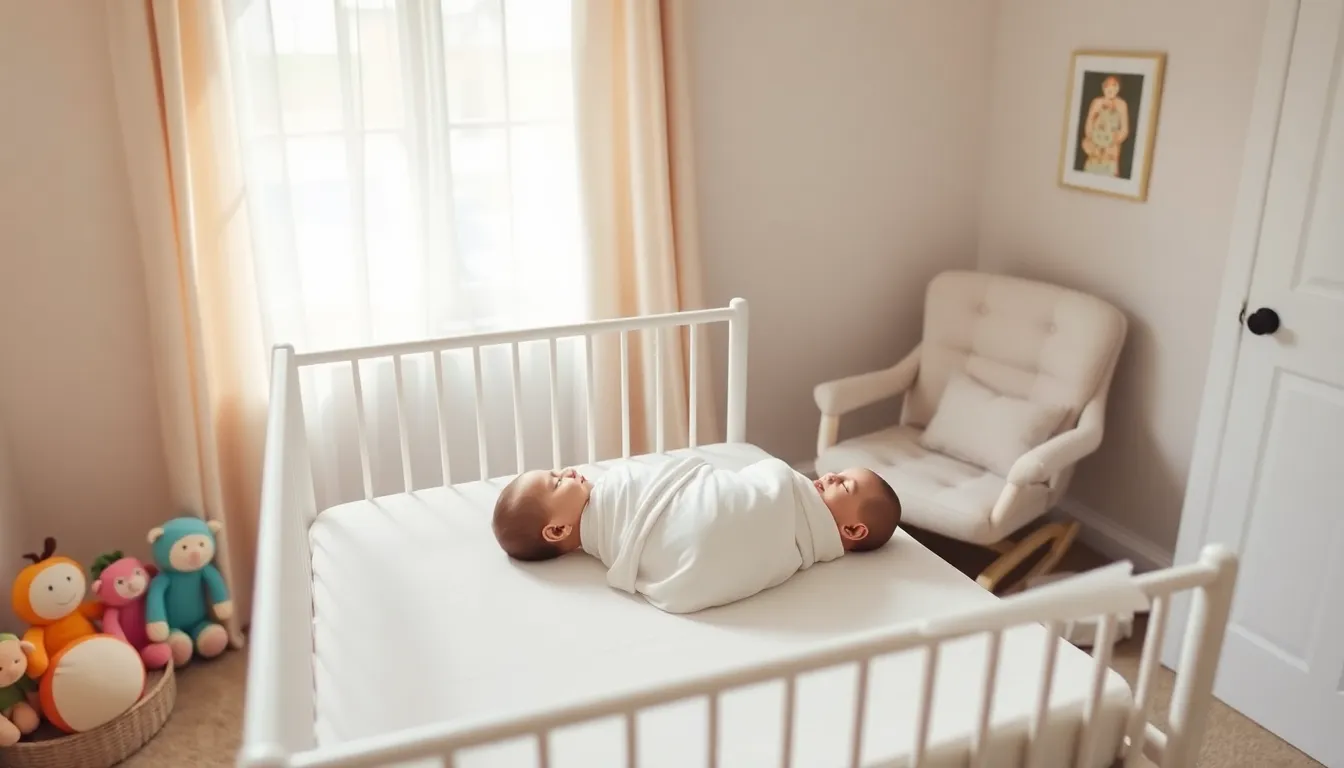Swaddling is like wrapping your baby in a little burrito of comfort, but when do you unwrap that cozy little package? While every parent wishing to create a peaceful sleep environment faces this dilemma, knowing the right time can feel like decoding the latest streaming series. In this guide, we will explore the benefits of swaddling, the signs it’s time to stop, and much more. Spoiler alert: your little burrito might just be ready to explore the world without those snug wraps sooner than you think.
Table of Contents
ToggleUnderstanding Swaddling: Benefits and Purpose

Swaddling has been a cherished practice for centuries, offering an array of benefits for both babies and parents. The primary purpose is to create a womb-like environment, providing the comfort and security that infants crave. This snug wrapping can help reduce the startle reflex, which causes many babies to wake suddenly. Also, swaddled babies may experience longer sleep durations, giving parents a much-needed break. Besides, swaddling can aid in regulating body temperature, helping infants feel safe and cozy. But, understanding not just the how but the why behind swaddling is crucial for every parent.
Signs That It’s Time to Stop Swaddling
Recognizing when to stop swaddling is essential for your baby’s development and comfort. Common signs include:
- Rolling Over: If a baby starts rolling over, it poses safety risks when swaddled.
- Increased Movement: Watch for increased movement or attempts to break free from the swaddle. If they seem more interested in extending their limbs and moving about, swaddling may no longer serve its purpose.
- Attempting to Self-Sooth: As babies grow, their ability to self-soothe improves. If they begin to suck their thumb or rub their face to find comfort, this may signify readiness to transition.
- Sleep Disruptions: If swaddling starts affecting the quality of sleep negatively, it might be time to let go. A fussy baby in a swaddle might just be trying to tell you something.
Age Recommendations for Discontinuing Swaddling
Most pediatricians recommend discontinuing swaddling when babies are between 2 to 4 months old. By this age, they generally begin to exhibit signs that they are ready to move on. But, every baby is unique, and developmental milestones vary significantly. If a baby is already rolling over or showing increased awareness of their surroundings, it may be necessary to transition sooner. Keeping an eye on individual development is key: there’s no one-size-fits-all answer here. Pay attention to the cues your baby provides.
Alternatives to Swaddling
Once it’s time to stop swaddling, parents may wonder what alternatives exist. Here are a few options worth considering:
- Sleep Sacks: These allow babies to stay snug without restricting movement, providing warmth while encouraging freedom.
- Loose Blankets: For both warmth and comfort, using a lightweight blanket can be a reassuring option as long as safety guidelines are followed.
- Wearable Blankets: These offer a great in-between solution, keeping your baby cozy while allowing them to move their arms and legs freely.
How to Transition from Swaddling
Transitioning from swaddling can be as simple as introducing some gradual changes. Here are some techniques to help:
- One Arm Out: Start by swaddling with one arm out. This gradual approach can help make the transition smoother.
- Transition to a Sleep Sack: Substitute the swaddle with a sleep sack to maintain comfort while allowing movement.
- Establish a New Routine: Carry out new calming practices before bedtime, such as gentle rocking or soothing sounds, to help ease your baby into this new phase.
- Be Patient: Just like any change, patience is key. Expect some fussiness at first, but it will get easier for both you and your little one.



